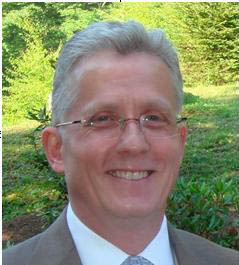John Chatham, Ph.D., Professor, Molecular & Cellular Pathology, was recently awarded an R01 from the National Heart, Lung, and Blood Institute titled, "STIM1 and its Role in Regulating Cardiac Metabolism." The award begins April 1 and will run until March 31, 2021. The project is expected to run through 2024. The process of working toward this R01 began in 2012.
Dr. Chatham outlined three specific aims for the grant. Those were to identify the full extent to which STIM1 regulates cardiac metabolism, establish the mechanisms by which STIM1 influences mitochondrial function in the heart, and determine how diabetes regulates STIM1 levels and whether loss of STIM1 contributes to the adverse effects of diabetes in the heart.
This project was originally funded by an R21 grant, with Dr. Helen Collins who came from the United Kingdom, to assist with the research as a post-doctoral fellow. Shortly after arriving she was awarded a post-doc fellowship by the UAB Comprehensive Cardiovascular Center; subsequently, she obtained a post-doc fellowship from the American Heart Association, which was followed by a fellowship from the American Diabetes Association. Collins left Chatham's lab and joined the University of Louisville last fall as an Assistant Professor.

STIM1 is a protein that, according to Chatham, 'had been ignored in the heart for a very long time until we started looking at it." His lab’s work on this protein showed that it seemed to be functioning as it did in other tissues and cells. His R21 grant proposal was designed to make a knockout mouse specifically in myocytes and then look at how it might function in cardiomyocytes--the cells responsible for generating the force that contracts the heart.
Calcium is used to signal a variety of different processes in every cell type. The specific proteins that were involved in controlling these pathways in any cell type was not clear until 2005 when STIM1 was identified, Chatham explains. All of that was done in cells that have nothing to do with the heart. The heart is a little different because it uses calcium to contract the muscle.
"I have always been intrigued by how the heart combines those two processes—using calcium to control many different cellular processes as well as managing the large changes calcium needed to contract cardiac muscle on a beat-by-beat basis—it seemed hard for these to coexist." Many cell pathways have similar signals, and Chatham says it made sense STIM1 would be in the cardiomyocyte.
"We looked for where the protein was localized in the cardiomyocyte and it was in the same place as other cells. We infected them with a fluorescent-tagged STIM1 protein and it behaved as expected based on studies in other cells. It seemed to play a role but was not mentioned in any review article about calcium in the heart until about 10 years ago. I was convinced it was there for a reason, and was important, which is why we went ahead and developed the knockout model."
By taking the protein away specifically in cardiomyocytes , the team found that while young the heart function was normal, but after 4 months the heart developed a dilated cardiomyopathy. When looking at the cells, Chatham's team could see changes in the structure of the cardiomyocytes early before function declined. "STIM1 clearly was doing something important in the normal heart, but it was not clear what that was," he says. In the meantime, some studies were occurring showed it played a role in pathology in cardiac hypertrophy. "I just didn’t believe that was the only function of STIM1 in the heart."
His initial R01 application in 2014 missed funding by one percentile. "That review suggested other people thought it was interesting as well," he says, so he resubmitted it as a new application.
Unfortunately, the initial response to the new application was not positive, so Chatham submitted another revision. Fortunately he was able to continuing his STIM1 research thanks to bridge funding from the School of Medicine and the Department of Pathology. Over the next few years, he continued to rewrite and submit 9 more versions of the same grant until at the end of 2019 a revised R01 application got a fundable score.
"I continued working on this grant because I knew the underlying science was good, and there was very little work going on in this area," Chatham says. "Also, because I am stubborn!"
Chatham received the notice of grant award the Friday before UAB campus moved to the limited business model, due to the coronavirus pandemic. This postpones the project temporarily, but Chatham says he will be recruiting a postdoctoral fellow to pursue the research.
"Heart failure continues to be a major problem in our society—the five-year survival rate is somewhere around 50%—and we really don’t have a great way of treating it," Chatham says. "I feel this protein is controlling some basic calcium-handling process in cardiomyocytes, so if we can understand what it does in the normal heart, we can possibly understand how it might contribute to heart disease."
Chatham joined UAB in 2000 as an Associate Professor in Molecular and Cellular Pathology and became Professor in 2007. In 2011 he served as the UAB Faculty Senate Chair. He also served for five years as the Co-Director in the UAB Cardiovascular Center and seven years as the Director of the Division of Molecular and Cellular Pathology. He now works as a Professor primarily to mentor graduate and post-doctoral students. He earned his doctorate in Biochemistry in 1987 from the University of Oxford, England, and he completed his post-doctoral training at Johns Hopkins School of Medicine, Maryland in 1989.